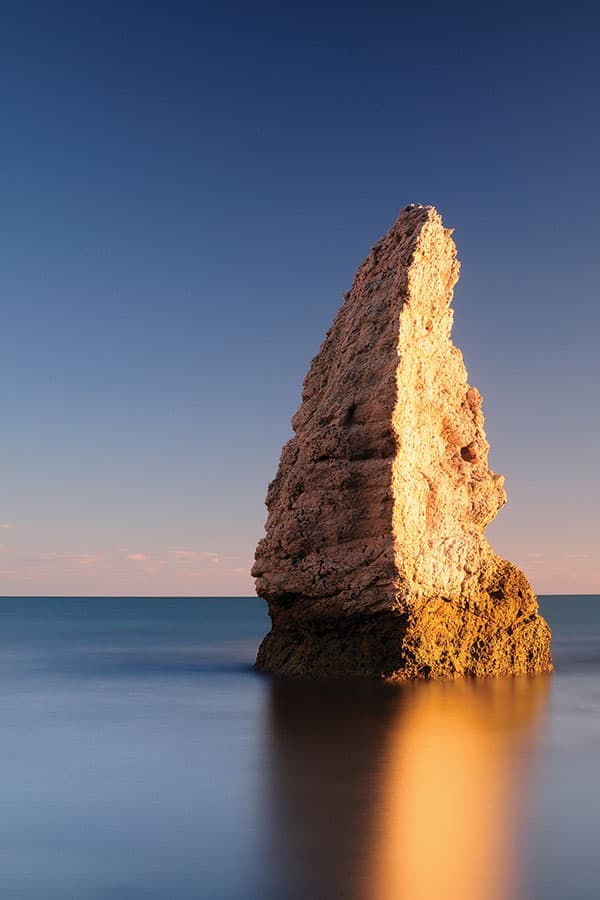
The mighty Butter Rock reflected in the glassy sea off the Dorset coast
I’m often asked what attracts me to landscape photography. Simply put, it gets me out into the beauty of the countryside. Given that my regular job has me working indoors and in the dark (since leaving school I’ve worked in the theatre industry as a lighting technician and electrician), this is a big draw.
Also, around once every 10 times that I go out to shoot, I’ll get that one amazing morning or evening when the conditions are even better than usual. Trying to repeat this experience becomes addictive, and pushes me to keep going and adding to my collection of images.
I also appreciate the social side of photography, be it on social media or the friends I make when I go shooting. A few months ago, I found myself standing on the hill at Corfe Castle in Dorset in a complete fog white-out, chatting with others for over an hour while we waited to get a shot. I quite like the camaraderie among total strangers.

A long exposure of a coastal groyne near Brighton, East Sussex
The best landscape photos reveal something unique but, more importantly, catch the viewer’s eye. Even the most familiar places and compositions can seem fresh if approached differently. A strong sunrise or sunset, a blaze of golden light, an enveloping mist, a blanket of snow: all these can bring a unique quality to a familiar scene.
With photography, you’re always learning and improving. It’s difficult to get a perfect shot of a particular location, so you’ve got to keep returning to it until you get something you are happy with. As you keep going back over a period of weeks, months or, in some cases, years, your skills improve, which means you get even better shots.
Shooting vertical
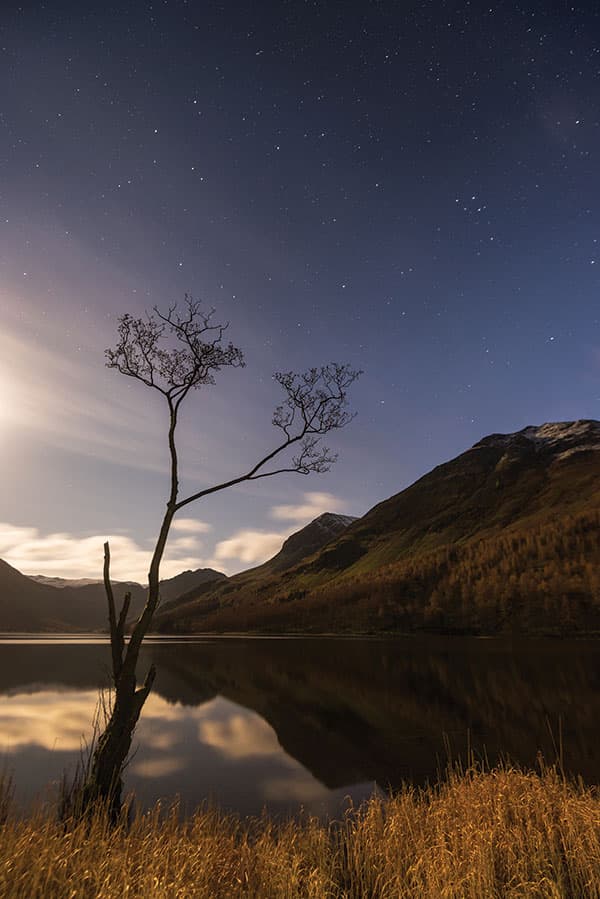
Moonlight and stars light up the Buttermere valley in the lake district
A large part of my work involves shooting in portrait format. There are several reasons for this. It allows me to accentuate the feeling of depth in a shot, especially when using a wide lens, and I can get really close to a strong foreground but still allow myself the space to include the middle and background of the scene. This can be difficult to achieve when shooting in landscape format.
Shooting in portrait format has its challenges, though. When using a wideangle lens, you have to be careful that you keep an eye on your focusing, especially when using a full-frame camera. The distance between foreground and background in a portrait frame can be quite significant. This is where careful manual focusing, using live view, comes into play. Sometimes the 3:2 aspect ratio is a little too tall and thin in a portrait format, so I find cropping to 5:4 can help frame the shot a little better. You lose a bit of the depth, but it does give you back some of the width.
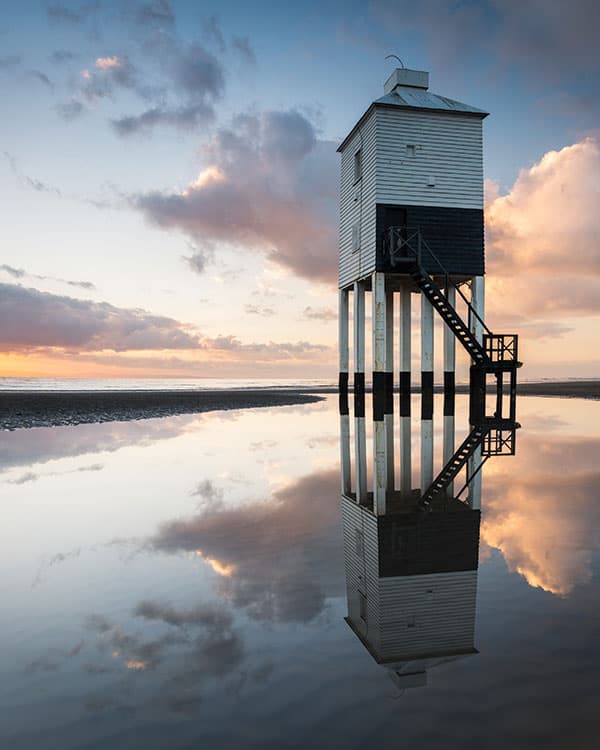
Burnham-on-Sea Low Lighthouse, Somerset
One thing I have often thought about when shooting vertical landscapes is that you have to be a lot more selective in your composition. You must choose a particular slice of a wide scene to include in your photo, even though you’re naturally seeing a wide landscape view.
Take Durdle Door in Dorset, for example. The location lends itself very nicely to being shot in landscape mode. The scene is wide, and the bay sweeps around to where you are standing. However, when shooting in portrait format you will never be able to include everything in the scene, so you have to consider the strongest parts of the view and ensure they’re in your composition.
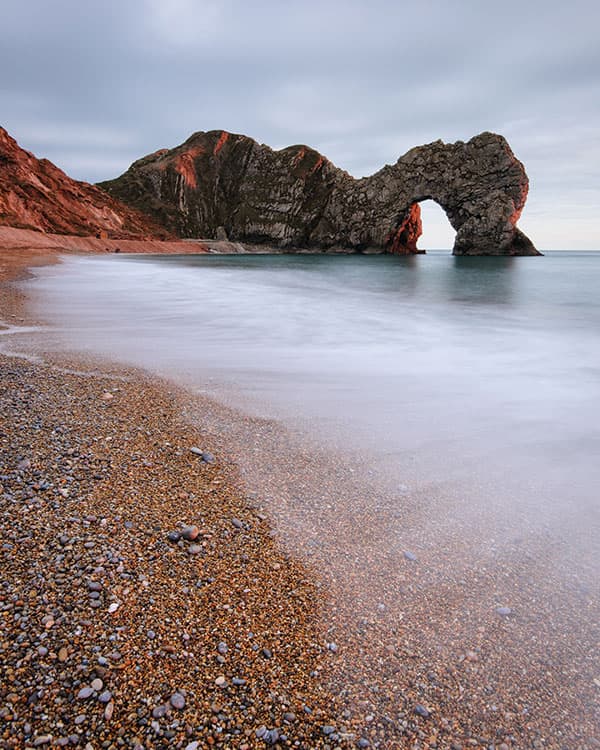
The last of the sunlight illuminates the arch of Durdle Door, Dorset
Conversely, a particular location might have something of interest, but the outer edges of the view don’t add anything to the composition.
In this case, use a vertical view to exclude the items you don’t want, and focus on the subject. I often find this when shooting in woodlands or forests. I like to use a vertical format to accentuate the height of the trees and pick out the most interesting parts.
I rarely have preconceived ideas about how or what I’ll shoot when I go into a location. There are certain shots I have a strong idea about, but sometimes it’s liberating just to turn up to a location and see what luck has in store. If you always go out with a fixed idea, it’s easy to get transfixed by what’s going on with that particular shot that you can miss what’s behind you.
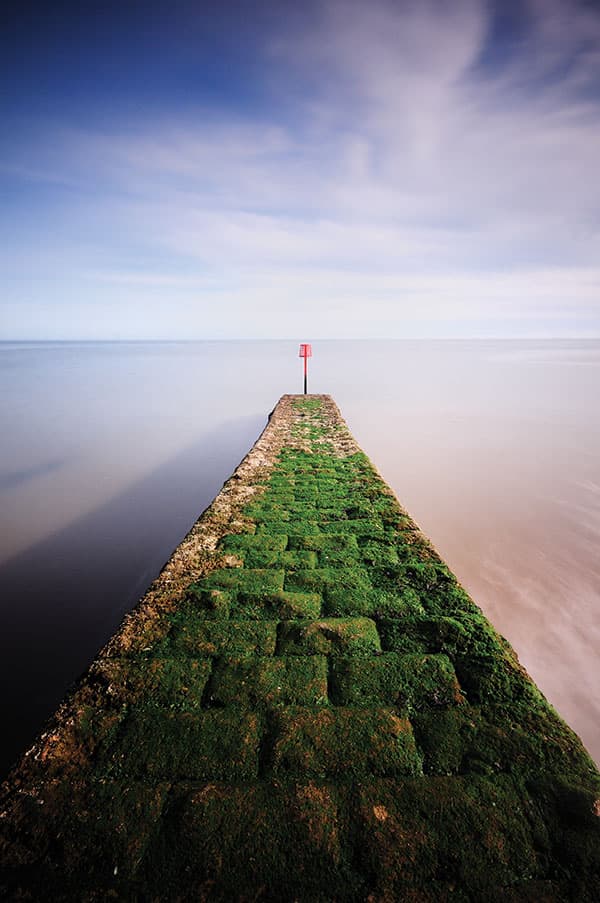
A groyne stretching out to sea at Dawlish, Devon
The other thing to consider is that it’s very easy to research upcoming trips these days from the comfort of your computer using a combination of The Photographer’s Ephemeris, OS Maps and Google Maps, as well as other people’s work on social media. However, without realising it, what you think is your idea for a location can often have been someone else’s. To avoid this, from time to time it’s nice to pick a new location and see what you get without pre-planning.
Kit and accessories
I’ve always been a Nikon shooter. I started with the brand by accident but have stuck with the firm’s cameras ever since. I went over to full frame in 2014 using a D610. It produced fantastic image quality, but I never quite got on with the camera’s feel and functions. I traded it in for a D750, and I am much happier with this. In fact, I really believe it is the best-value camera on the market. You are getting really excellent image quality with a fantastically quick AF system and a tilting rear LCD screen (you never realise how useful one is until you don’t have it), all bundled into an attractive, lightweight and compact body with a grip.
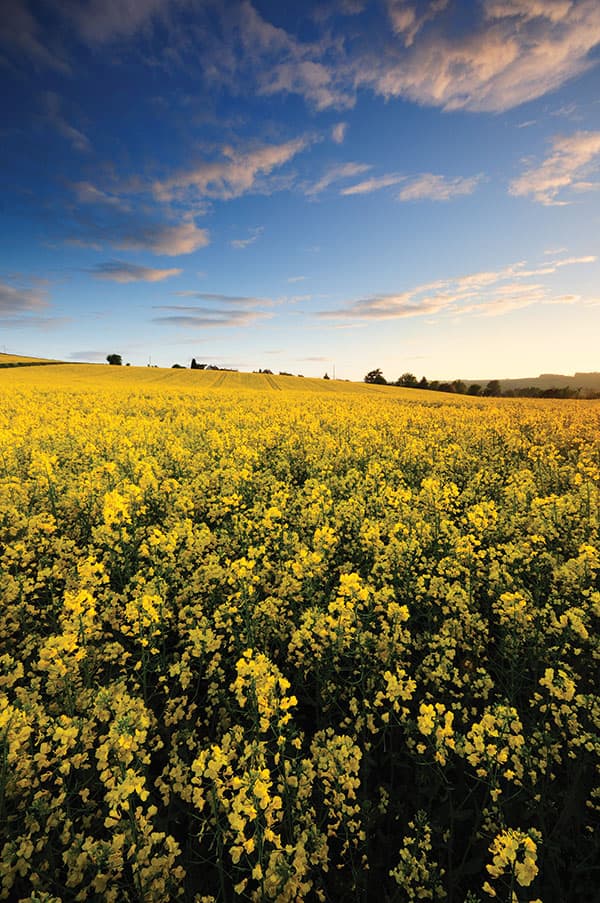
A field of oilseed rape at sunset
Lens-wise, I shoot almost exclusively with a Nikon 16-35mm and 70-200mm, both of which are the f/4 varieties. Each gives me the ability to cover 99% of the focal lengths I shoot most often, and the flexibility to work quickly without having to change between a range of primes. After a year or so of shooting on full frame, I used Lightroom to show my most commonly used focal lengths and apertures, so I have been able to slim down my kit bag to reduce what I need to take out with me. The combination of these three items means I always have a nice lightweight kit bag that doesn’t weigh me down as I work, and which also encourages me to travel farther when out walking.
As I’m predominately a landscape and seascape photographer, I always have a set of Lee grads on me. I’m currently using a 0.6ND and 0.9ND hard grad, a 0.9ND, a landscape polariser and a Little Stopper. It saves me much time being able to get the exposure right in camera rather than having to merge two or three shots on the computer later. I use my hard grads even when some people would use soft grads (forests, mountain ranges and so on) since I find the sensor of the D750 to be so forgiving in terms of dynamic range and shadow detail that you can pull the detail out of the shadow areas later.
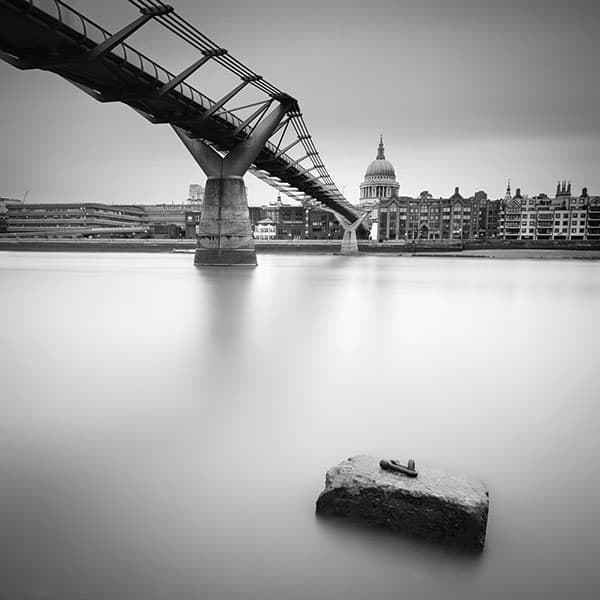
London’s Millennium Bridge, leading to St Paul’s Cathedral
When shooting water, I like to introduce a bit of blur, and the 0.9ND or Little Stopper are both very handy for this. It’s a fine line between a fast shutter speed ‘freezing’ the water and a slow shutter speed turning it into milk with no definition, but it’s nice to be able to show motion in a landscape shot in the same way that a sports photographer would show motion with a panned shot.
As I like to keep a lightweight kit for when I am out, I use a carbon-fibre Manfrotto MT055CXPRO3 tripod with a Red Snapper head. It’s a sturdy, heavy-duty pairing that’s still relatively light. It’s very important as my tripod goes almost everywhere with me.
Finally, when out photographing, I always have a lanyard around my neck, containing my Nikon ML-L3 remote (which is indispensable for not introducing vibration and potential blur into the shot) and a lens-cleaning cloth.
Behind the image

A lone deer walks through a tree-lined avenue near Charlecote, Warwickshire
This shot contains the three major elements I often struggle with: woodland, wildlife and black & white conversions. Close to where I live is a very long avenue of trees with a grass path running down the middle. It’s a spot I’ve visited on a few occasions, but never quite got what I wanted. I struggle with woodlands as I like my shots to be clean and tidy, and these are often the exact opposite.
On this day, the mist drifted into the avenue of trees and I was able to get a strong shot without the clutter of the background. I used a vertical composition to show the height of the trees and to allow me to use as much of the path as possible to lead into the shot. It was still missing something, though – at least until a herd of deer walked through the trees. I waited until there was just a single deer in shot, and took a few frames to choose from later.
I converted the shot into black & white so I could highlight the mist by increasing the highlights and hide some of the unsightly ground foliage by pulling down the shadows. Even then, I didn’t see the potential of the shot and it probably would still be unseen had I not sent it to a friend who encouraged me to publish it on social media.
Favourite locations
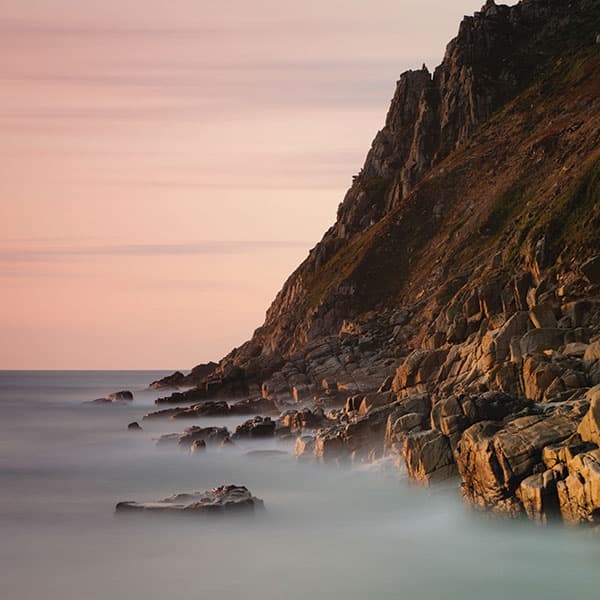
Rocky formations and misty seas in Cornwall
As I was born and raised on the Dorset/Hampshire border, I know the area incredibly well and tend to shoot a lot in Dorset and the New Forest. There are so many well-known locations in these areas that some people travel from all over the UK and beyond just to see them. You are almost spoilt for choice in an area like this. Other locations I enjoy shooting in are the Somerset coast, the Cotswolds and, more recently, Northumberland and the North East coastline.
I grew up ten minutes away from the sea, so coastal locations appeal to me. I like the fact you can shoot them all year round and they always look slightly different. Different tides, weather, changes in the beach – they always give you something to work with. From mid-spring to autumn, I tend to do more of my work inland, taking advantage of the changing crops and colours each month brings.
That said, I work all over the country and always keep my camera in the car so I can take advantage of nearby locations. This has really helped fill my portfolio with places I wouldn’t normally be able to visit.







